
Ten Game Changing Crop Circles

INTRODUCTION
There have been plenty of crop circles: some great, more good, some substandard and a number of absolute stinkers; yet very few have been complete game changers. Now is the time to pay reverence to the crop circles that truly altered the phenomenon…
Cheesefoot Head, Nr Winchester, Hampshire (1983)

The Cheesefoot Head quintuplet of 1983. Photograph by Tim Daley / The Express
Until 1983 the majority of crop circles reported consisted of singular events, or, on occasions, no more than three circles arranged in a line or ‘triangle’. This changed on 19th June 1983 in the natural amphitheatre of Cheesefoot Head, Winchester, Hampshire. A central circle was surrounded by four smaller satellites, each of these equally spaced around a narrow ring. This pattern would become known as the ‘quintuplet’, a recurring motif in circles that can still be found today.
It is possible that the first quintuplet appeared in 1976 at nearby Headbourne Worthy, but the Cheesefoot Head formation is important as it captured the imagination of the early cerealogists; after all, its form did resemble the what you would have expected from the landing marks of a Hollywood-style UFO. A year later the quintuplet would gain public infamy after one appeared on land in West Sussex owned by Labour MP Denis Healey. It found its way into the press as ‘Healey’s Comet’ and heightened national interest in crop circles.

The 7 July 1984 quintuplet at Cradle Hill, Seaford, near Alfreston in West Sussex. Photograph by Denis Healey.
Chilcomb Down, Nr. Winchester, Hampshire (1990)
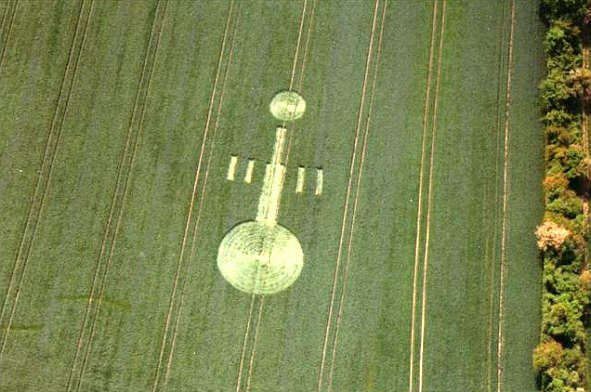
Photograph by Hampshire Police.
The crop circle that changed absolutely everything and gave us the pictogram. Appearing at Chilcomb Farm, near Winchester, on 23 May 1990, this small formation was very first to include straight lines in its construction. Though totally underwhelming by modern standards it is arguably the most important circle in cerealogical history.
Westbury, Wiltshire (1990)

The Operation Blackbird hoaxed circle. Image from BBC Breakfast Time.
To modern eyes it looks crude, clumsy and something of a mess, but this hoaxed crop circle close to the Wiltshire town of Westbury represents an important moment in cerealogical history. It appeared in a field between Lower Westbury Road and a railway line on 25 July 1990, under the gaze of hilltop cameras manned by members of the Operation Blackbird crop-watching team. Despite cerealogist Colin Andrews’ initial enthusiasm for the circle, closer examination revealed it to be a hoax; some board games, wooden sticks and a length of wire were found inside the formation.

Colin Andrews with some of the surveillance equipment to be used at Operation Blackbird in July 1990.
The event caused Andrews considerable embarrassment but, more notably, heightened public awareness of human involvement with circle making. Those with a liking for a good wind-up went on to show that other big name cerealogists could be duped; a year later it would be the turn of Andrews’ peers Terence Meaden and Pat Delgado to have their theories blown apart by the work of very human circle makers.
Alton Priors , Wiltshire (1990)
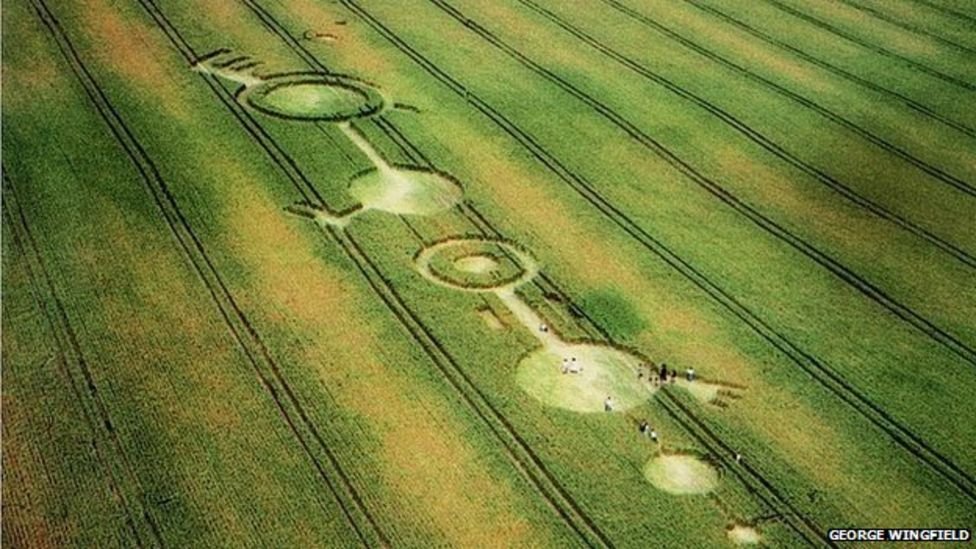
The East Field pictogram from 1990. Photograph by George Wingfield.
On 12 July 1990 the residents of the conjoined Wiltshire villages of Alton Barnes and Alton Priors awoke to a 150m long pictogram in the wide expanse of East Field, just underneath the southern edge of the Marlborough Downs. For its time the formation was simply unparalleled in its size and complexity. This ground-breaking circle rapidly attracted the attention of the global media, turning the Alton villages into a cerealogical Mecca. Visitors could pay £1 to view the circle at ground level. Others parked up on the Lockeridge and Pewsey roads to grab a peek from afar, or traipsed to the top of Walker’s Hill for the best view.
The Alton Barnes pictogram truly marks the unrivalled zenith of the crop circle phenomenon. It was the time when England went completely nuts for crop circles and the mystery behind them. In October the legendary rock band Led Zeppelin issued their Remasters box-set featuring the Alton Barnes pictogram as its front cover. Crop circles would never be the same again: they were now a mainstream issue.
Barbury Castle, Nr. Swindon, Wiltshire (1991)

Photograph by George Wingfield.
On the night of 16/17 July 1991 a quite extraordinary pictogram was formed in wheat underneath Barbury Castle, an Iron Age hillfort close to the towns of Swindon and Wroughton. Unlike anything to have come before it, the formation featured an approximation of an equilateral triangle atop a double ringed circle. Each of the three vertices of the triangle bore a different motif: a spiral, a plain ring and a six spoked circle.
Whilst the construction of the circle wasn’t perfect — one side of the triangle sports a considerable bulge — the design was a massive shift from the single axis pictograms of the preceding twelve months. Retrospectively, the Barbury Castle circle is very much the first crop circle to fit in with contemporary geometric circle designs. It would pave the way for the smaller, but equally important circle at Bythorn, Cambridgeshire two years later.
Ickleton, Cambridgeshire (1991)

The 1991 ‘Mandelbrot Set’ fractal circle. Photograph by David Parker.
Discovered on 12 August 1991, close to the Cambridgeshire village of Ickleton, this circle has become known as the Mandelbrot Set for its similarity to the fractal (see below) discovered by mathematician Benoit Mandelbrot in 1980.

Created by Wolfgang Beyer with the program Ultra Fractal 3. – Own work, CC BY-SA 3.0, https://commons.wikimedia.org/w/index.php?curid=321973
In little over a calendar year the crop circle phenomenon had progressed from simple pictograms to a fractal. However, the Mandelbrot Set would be a circle well ahead of its time; croppies had to wait for another five years until someone or something saw fit to revisit fractal-type designs.
Bythorn, Cambridgeshire (1993)

Photograph by Lucy Pringle
During the first weekend of September 1993 a small but beautiful crop circle was discovered close to the Cambridgeshire village of Bythorn. It was reminiscent of the geometric design style ushered in by 1991’s ‘mother of all pictograms’ at Barbury Castle (see above). The formation was made of a circle in which ten petals surrounded a pentagon. This, in turn, contained a central circle, three rings and a five pointed star. Mandala like in its structure, the circle soon became the focus of a controversy that split the cerealogical world on the capabilities of human circle makers.
Authorship of the circle was openly claimed by a nineteen year old artist called Julian Richardson. Before an inquiry called by the Centre for Crop Circle Studies, Richardson asserted he had made the circle over two successive nights, quite alone, in order to produce a work of previously unparalleled complexity. The young man’s testimony became a major talking point for croppies. Some saw his description of events to be perfectly feasible; others believed he was a liar. Much drama ensued, some of which is outlined and can be read here in issue 12 of The Cerealogist.
Bythorn was a game changer not only for the way in which it demonstrated the capabilities of the human artist, but because it ushered in a new trend for geometric crop circle design: one only has to look at the massive shift from pictogram designs in 1993 to the likes of 1994’s galaxies, stars, serpents, mandalas, spider webs and figure eights. Bythorn stands as the crop circle that took the phenomenon into its present age.
Bishops Cannings, nr Devizes, Wiltshire (1999)

Photograph by Ulrich Kox.
It has perhaps become passé, but the now common ‘basket weave’ style of lay in crop circles can be traced back to a short-lived formation at Bishops Cannings. It marked the very end of the 1999 season and was obliterated by farmer Andrew Naunton on the very same day it appeared. Even now, the lay in the formation is quite extraordinary. We doubt it will ever be surpassed.
Milk Hill, Nr. Alton Barnes, Wiltshire (2001)

Photograph by Steve Alexander
On the night of 12/13 August 2001 a huge formation was created on top of Milk Hill in the Vale of Pewsey. Dwarfing the average diameter of a circle by at least 1000 ft, it contained a record 409 individual circles. To put this into some perspective, consider this from the Circlemakers.org website:
Here’s something to ponder, if this formation was man made allowing for time to get into and out of the field under cover of darkness the construction time left should be around four hours. Given that there are over 400 circles some of which span approx. 70ft in diameter that would mean that one of those circles would need to be created every 30 seconds and that’s not even allowing any time for the surveying, purely flattening, this formation pushes the envelope and that’s a MASSIVE understatement… my brain hurts!
Whilst there have been large circles since the Milk Hill formation arrived, none has come close to the overall scale of this circle and the quantity of individual components it contained.
Chilbolton Observatory, Hampshire (2001)

Photograph by Steve Alexander/Temporary Temples
In 1974 the Arecibo radio telescope in Puerto Rico transmitted a message to the M13 star cluster. It detailed basic information of humanity and our technological achievements. In August 2001 a close replica of the message’s graphical form appeared close to the Chilbolton radio telescope in Hampshire. This reply featured subtle differences including a representation of an alien humanoid and its DNA, together with the representation of a crop circle that appeared on the same site the previous year.
Croppies and the wider public could only be impressed by the formation, particularly as it tied in with wider enthusiasm for science fiction and popular science. Here, for at least the first time in the public consciousness, was a crop circle with a direct message from a possibly alien lifeform. This theme would be revisited a year later at Crab Wood on the outskirts of nearby Winchester with the legendary representation of a ‘grey’ alien holding a binary disk.


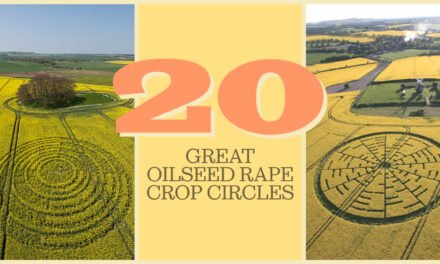
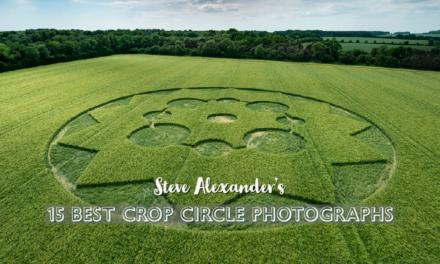
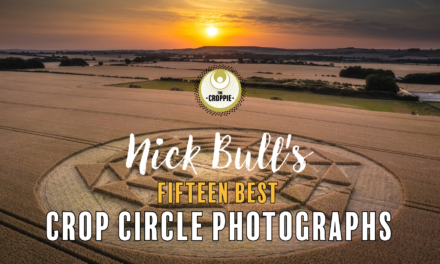
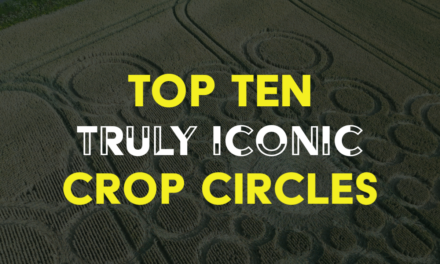
A very respectable list. I note that none of the idiots currently shouting about their own greatness on Facebook had anything to do with any of them.